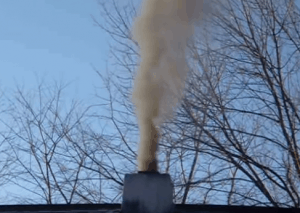 Until the 1960’s most homes were heated throughout by a fire in one of a number of rooms. Chimneys were in extensive use for many months of the year. However, in the 1960’s onwards, there was a shift towards central heating, and the millions of hard worked chimneys around the UK became largely redundant as the main method of heating a home. The shift towards central heating in homes meant many fireplaces were bricked up, or removed completely.
Until the 1960’s most homes were heated throughout by a fire in one of a number of rooms. Chimneys were in extensive use for many months of the year. However, in the 1960’s onwards, there was a shift towards central heating, and the millions of hard worked chimneys around the UK became largely redundant as the main method of heating a home. The shift towards central heating in homes meant many fireplaces were bricked up, or removed completely.
Move on a number of years, and there has been a revival of fireplaces, some of which have been reinstated as open fires, others as wood burning stoves.
Caring for old Chimneys:
The external and internal brickwork on old chimneys are susceptible to damage and general ageing. The external parts of a chimney are also susceptible to frost. Regular checks are needed should you start to use, or have been using a chimney on an older property with an open fire of wood burning stove. The use of binoculars will be able to help you see any damage. Internally is harder to do, but a chimney sweep will be able to help – signs such as excessive dust, and bits of motar can be telltale signs of internal issues.
To ensure successful repair, all lose material needs to be replaced with a matching lime mortar, as non-breathable alternatives such as cement will simply lead to further problems. Loose chimney pots should be fixed firm and the lead flashing should be inspected. Signs of a chimney leaning should be checked by a surveyor.
Modern Technology vs Old:
A modern flue or chimney liner can provide an airtight, highly efficient way for products of combustion to be released up and out of a fire. In the past an effort was made to try and make chimneys airtight to minimise leakage of flue gases into a room. Flues were parged internally with a rough coat of lime motar as they were built. Over time, this degrades, and cracks – meaning they are no longer air tight. Safety standards must not be compromised but there must be sensitivity considered as to keeping originality of the property. It can be a tight balance but a compromise needs to be met. Each property needs to be considered on it’s merits and work needed.
 Fire Risks & Older Properties:
Fire Risks & Older Properties:
Chimney fires are a real threat in older properties, where a flue has not been looked after. Having a chimney swept by a NACS or HETAS approved chimney sweep will greatly reduce this risk.
Heat transfer is another issue to be aware of in older properties. Roof joists or other timbers were often built into the structure of the chimney in old buildings – very common in thatched cottages. Many insurance companies stipulate the use of insulated flues for thatched homes.
Despite the potential risks, it is great to see more and more period homes being carefully repaired, and showing off either high efficiency wood burning stoves, or if you’re less environmentally focused, open fires!








